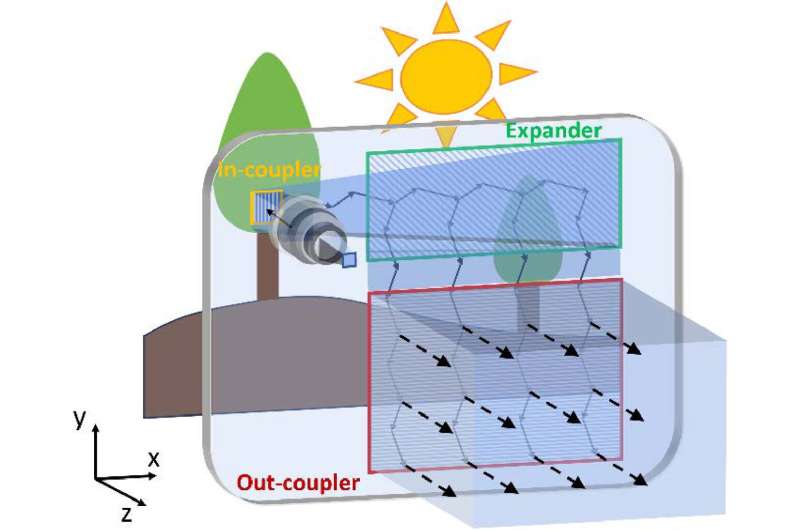Researchers from the University of Rochester have made significant strides in improving the brightness and image clarity of augmented reality (AR) glasses. A new optical component, which utilizes advanced metasurface technology, has the potential to transform AR glasses into devices as essential and user-friendly as modern smartphones. This breakthrough was reported in the journal Optical Materials Express on November 11, 2025.
Current AR headsets are often criticized for being bulky, having short battery life, and featuring displays that can be dim and difficult to see, particularly in outdoor settings. According to research team leader Nick Vamivakas, “By creating a much more efficient input port for the display, our work could help make AR glasses much brighter and more power-efficient.” The goal is to transition AR devices from niche gadgets to lightweight, comfortable eyewear.
Innovative Design for Improved Performance
In their study, the researchers replaced the traditional single waveguide in-coupler—the component responsible for injecting images from a micro-display into the lenses—with a new design featuring three specialized zones made from metasurface materials. This innovative approach is expected to significantly enhance image quality and overall performance in AR applications.
Vamivakas emphasized the advantages of metasurfaces, stating, “Metasurfaces offer greater design and manufacturing flexibility than traditional optics.” The research aims to redesign the entire waveguide system, including the input and output ports, to maximize efficiency and clarity. The new in-coupler is specifically engineered to capture incoming light effectively while minimizing light loss, a critical factor in maintaining high image quality.
Testing and Future Applications
To validate their design, the research team fabricated and tested each of the three metasurface zones individually. They then evaluated the complete system to measure total coupling efficiency across a horizontal field of view from -10° to 10°. The results showed an average efficiency of 30%, closely matching the simulated average of 31%. Notably, at the edge of the field of view, the efficiency measured 17% compared to the simulated 25.3%, attributed to high angular sensitivity and potential fabrication imperfections.
Looking ahead, the researchers plan to apply their metasurface design framework to additional components of the waveguide. Their goal is to develop a fully integrated prototype that combines the in-coupler with a micro-display engine and an out-coupler, aiming for a robust manufacturing process that can produce the complex nanostructures at a lower cost.
Vamivakas concluded, “This paper is the first to bridge the gap from that idealized theory to a practical, real-world component.” The team is optimistic that their advancements will pave the way for full-color (RGB) AR systems, making the technology more accessible and commercially viable in the near future.
